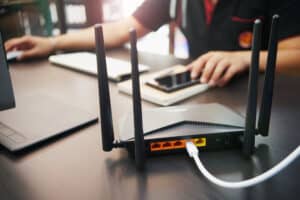
Microphones are an essential component in today’s world. You can find microphones in almost every device, such as laptops, smartphones, smart speakers, and even smartwatches. But microphones, like every other sensitive equipment, can get damaged. But how can you tell if a microphone is broken?
Generally, several symptoms indicate that your microphone is broken. In most cases, a distorted sound, echoing, high level of noise feedback, poor frequency picks up, and overall diminished sound quality signals your microphone is broken.
Experiencing symptoms of a broken microphone is no guarantee that the microphone is faulty. Occasionally, your microphone could misbehave due to a connection problem or even software-related. Hence, to be sure, several tests you can perform on your microphone will help you tell for sure whether or not your microphone is damaged.
Keep reading as we explore all of that in this article.
Signs Your Microphone Might Be Damaged
There are so many things that can cause your microphone to get damaged. For example, mechanical stress is one of the significant causes of microphone damage, as drops and impacts can cause many things in the microphone to get loose and eventually stop working. Humidity, dust, and smoke can also cause the microphone to get damaged, so you should protect your microphone from the elements.
To extend the lifespan of your microphone, you should always store it when not in use to protect it from mechanical damage. And when in use, you should use a pop filter which helps with moisture such as spit and saliva caused by plosive sounds getting into the microphone, which can potentially damage the microphone.
Below are symptoms that indicate when your microphone is damaged or developing an issue.
Poor Frequency Pick-Up
Generally, different microphones pick up frequency at different levels. However, when the frequency of your microphone is unusually poor, it is a sign that the microphone is damaged. The damage can be so severe that the microphone stops picking up frequency altogether. This signifies that you should repair or replace the microphone when this happens.
High Levels of Noise Feedback
Another symptom you are most likely to experience when your microphone is about to give out is when you get a lot of high-level noise feedback. It often occurs in the form of a buzzing or hissing noise. You may not even notice the static noise coming from the microphone. When the microphone is damaged, the noise feedback might be caused by line noise which is when the microphone interacts with the electronic components in the device.
Peculiar Sound
When the sound the microphone produces is way different from what it used to be, it could be a symptom that the microphone is damaged. So, when you start noticing this deviation, make a recording with the microphone now, and compare the sound with a recording of what the microphone sounded when you first bought it. If both sounds are different, it’s because the microphone is damaged.
Echoing
Another symptom that could indicate that your microphone is damaged or about to give out is when it starts producing an echo. Ideally, you shouldn’t be able to notice any echo from your microphone. So, when you start noticing an echo coming from your microphone, you might need to take the microphone to a technician for a checkup.
Voice Distortion
If all your recordings with the microphone sound distorted, it is a sign that the microphone is likely damaged. However, be cautious when dealing with distortion on a microphone, as not all distortion means the microphone is damaged. Sometimes, you might need to inspect the signal chain of the microphone or power source, as these two things are notorious for causing sound distortion.
How To Test if a Microphone Is Broken
If you are experiencing signs that indicate your microphone may be damaged but would like to be sure, there are a couple of tests that can be of use.
Below are three tests that are used to know often if a microphone is broken or not.
Visual Inspection
Visually inspecting your microphone is perhaps the most straightforward way to tell if the microphone is damaged or not. So, whenever your microphone starts to act funny, examining it visually should reveal whether it is damaged or not.
For the visual inspection test, inspect the outside of the microphone, then inspect the interior. Check around the body of the microphone for any physical damage. It would help if you also looked for signs of corrosion and the condition of the electrical components of the microphone and the ones connected to it.
Frequency Response Test
Another example of a great test you can do to test whether your microphone is damaged or not is the frequency response test. This test entails testing the frequency range the microphone’s diaphragm can pick up. So, if the microphone is damaged, it will not be able to pick up a lot of frequencies. Hence, recording with a damaged microphone may sound dull because it cannot capture high-end frequencies.
Impulse Response Test
Finally, you can perform the impulse response test, where you test how fast and accurately the microphone can record sound waves. For example, the fast attack of the snare drum would be difficult for a damaged microphone to capture accurately. Hence, when you perform this test, a damaged microphone will present itself as having a slower impulse response rate.
To test the impulse response of a microphone, you need specialized gear and technical knowledge, which an average individual may not have at their disposal. Hence, it’s best to leave this test for the professionals when you take your microphone to be inspected.
There are so many things that could go wrong in a microphone, and based on the microphone, it might not be easy to repair; making a replacement might be the best viable option.
Conclusion
Overall, the easiest way to check if your microphone is damaged or not is to perform a visual inspection of the internal component. If the microphone is damaged, the internal component of the microphone will leave specific trails, be it corrosion or damaged internal components, indicating the microphone is damaged.
Most importantly, it is advisable to store your microphone in a proper casing and take good care of it.








